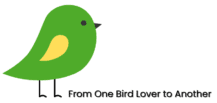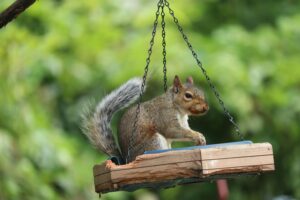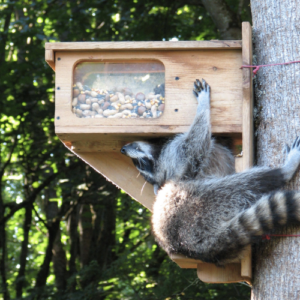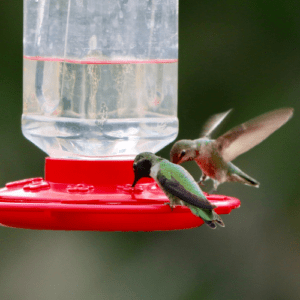I’ve always loved feeding the birds in my backyard. There’s something so soothing about watching a cardinal peck at sunflower seeds or hearing the soft cooing of mourning doves. But, I’ll admit—when I first started feeding the birds, I never imagined that I’d also be attracting mice. At first, it was just a few signs here and there, but before I knew it, I had a full-on mouse situation under my feeder. Do bird feeders attract mice? I quickly learned that the answer is yes—if you’re not careful, they absolutely can. Here’s how I figured it out and what I did to fix it.
The Unlikely Link Between Bird Feeders and Mice
I’ll be honest, I didn’t think much about mice when I hung my bird feeders. At first, it was all about watching the birds. I could spend hours gazing at the sparrows and chickadees. But soon enough, I noticed a few mouse droppings beneath the feeder, followed by tracks in the dirt. That’s when it hit me: does feeding birds attract mice? Yep, the food I was providing for my feathered friends was also inviting some furry visitors of a different kind.
The truth is, mice are opportunistic. They’ll find any source of food that’s easy to access—and bird seed is exactly that. While I loved the birds, I didn’t want to turn my yard into a rodent buffet. That’s when I realized I had to make some changes to keep the mice out without giving up on the birds I adored.
How I Knew Mice Were Visiting My Bird Feeders
It didn’t take long for me to spot the signs that mice had found their way to my backyard. The first clue was the mess. I began to see a lot more seed on the ground beneath my feeder—far more than what the birds would naturally leave behind. There were also signs of nibbling on the seeds, and after a while, I started finding tiny dark droppings near the feeder. Not to mention, during one of my winter walks around the yard, I spotted little mouse tracks in the snow.
At first, I thought it was just a fluke. But after noticing the same signs over and over, I realized that the mice were regularly coming by to feast on the spilled seeds. I didn’t want to just shrug it off, so I decided it was time to take action.
What I Did to Keep Mice Away from My Bird Feeders
I’ll be honest, I didn’t want to stop feeding the birds—I love having them around. But I also didn’t want to invite a family of mice to take up residence under my porch. So, over time, I figured out a few tricks that worked for me. Here’s what I did to keep the mice at bay without giving up my birdwatching hobby.
1. Switch to Tube or Hanging Feeders
One of the first changes I made was switching from a traditional platform feeder to a tube feeder. At first, I didn’t realize how much seed was spilling out of my platform feeder. But once I switched to the tube feeder, I noticed far less mess underneath. The tube feeder only lets out a small amount of seed at a time, making it harder for mice to feast on what falls to the ground. It was a game-changer for me, and the mice seemed to lose interest.
2. Use the Right Seed Mix
If you’ve ever fed birds, you know that sunflower seeds are a fan favorite. The problem is, they’re also a big attraction for mice. After noticing a pattern, I switched to a seed mix with less sunflower seed and more of the kinds of seeds that birds love but mice aren’t interested in, like thistle and safflower. I wasn’t sure it would work, but it made a noticeable difference. Mice just aren’t as drawn to these seeds, so there was less food for them to scavenge.
3. Clean Up Regularly
This one seems obvious, but it took me a while to catch on: cleaning up the seeds that fall to the ground really helps. At first, I didn’t realize how much seed was accumulating around the feeder. I’ve since made it a habit to sweep up any spilled seed every few days. This way, the mice don’t have a constant food source. I found it was easy to do after refilling the feeder—I’d just take a few minutes to sweep the area. If you’re dealing with a lot of mess, you might want to consider a platform feeder that catches the spilled seed, making cleanup even easier.
4. Invest in Rodent-Proof Feeders
I’ll admit, at first, I was hesitant to spend money on a rodent-proof feeder. But after several attempts to deter the mice, I figured it was time to bite the bullet. I invested in a high-quality, rodent-proof bird feeder, one with a metal cage around it that only larger birds can get through. Once I installed this feeder, I noticed the difference almost immediately. The mice couldn’t get into it, and my birds still had easy access. The peace of mind was worth the cost.
5. Add a Baffle
A baffle is one of those simple solutions that I wish I’d tried earlier. It’s essentially a smooth, slippery device that you can attach to the pole of your bird feeder, making it nearly impossible for rodents to climb up. After installing one of these, I stopped seeing the mice trying to climb up to the feeder. I also noticed fewer squirrels getting into the feeder, which was an added bonus.
6. Keep Your Yard Clean
Mice love to hide in tall grass and overgrown bushes, so keeping your yard tidy is another important step. I started trimming the bushes near the feeder, raking up leaves, and removing any debris where mice could be nesting. This was a simple fix but made a huge difference in reducing the number of mice that hung around. A cleaner yard just doesn’t provide the same level of shelter and food for rodents.
7. Humane Traps
If, despite your best efforts, mice have already started taking over your yard, humane traps can be a helpful tool. I’ve had to use traps a couple of times when I noticed an uptick in rodent activity. I always make sure to release the mice far from my home, so they don’t come back. It’s not my favorite option, but it’s been a helpful one when things get out of hand.
People Also Ask: Do Bird Feeders Attract Mice, Rats, Rodents, or Snakes?
As you start feeding birds in your yard, you might wonder if your feeder is attracting more than just your feathered friends. If you’re asking, do bird feeders attract mice, rats, rodents, or even snakes?—you’re not alone! Many bird lovers share these concerns. Here’s a breakdown of these common questions, based on my personal experience and practical advice.
Do Bird Feeders Attract Mice?
Yes, bird feeders can attract mice, especially when seeds fall to the ground. Mice are opportunistic and will take advantage of easily accessible food. The sunflower seeds and other seeds that fall under your feeder can become a quick snack for these small rodents. To prevent mice from making your bird feeder their dinner table, try to limit spillage by using a hanging or tube feeder. Clean up fallen seeds on a regular basis.
Do Bird Feeders Attract Rats?
Yes, bird feeders can attract rats but usually under certain conditions. Like mice, they will be attracted to the spilled bird seed that has fallen to the ground. Whereas rats are normally more cautious than mice and nocturnal, if the food source is easy to access, they’ll still be after it. To discourage the rats, you can use rodent-proof feeders with cages or with some sort of protective barriers, and you must clean up around the feeder frequently to avoid tempting them with leftover seeds.
Do Bird Feeders Attract Rodents?
Absolutely. All types of rodents are attracted to bird feeders, including mice, rats, and squirrels. They are searching for an easy food source, and the seeds that have fallen from feeders are that food. To decrease the number of rodents that visit, use a high-quality, rodent-proof feeder and immediately clean up spilled seed. A baffle on your feeder pole will also deter rodents from climbing up to the seed.
Do Bird Feeders Attract Snakes?
Although it’s less common, bird feeders can attract snakes indirectly. Snakes are often drawn to areas where there is an abundance of small animals to hunt, like mice and other rodents. If your feeder is attracting these animals, snakes might follow in search of a meal. To discourage snakes, try to keep the area around your feeder tidy and free from tall grass or debris where they might hide. Installing snake repellent or using natural deterrents can also help keep them away.
Conclusion: Birdwatching Without the Mice
Looking back on my experience, I realize that feeding birds doesn’t have to mean inviting mice to your yard. After experimenting with different feeders, seed mixes, and cleaning routines, I found a balance that lets me enjoy the birds without worrying about rodents.
I’ve learned that eliminating the food source is not the answer—it’s about managing the mess and creating a space that’s just as welcoming to birds as it is unwelcoming to mice. If you’re in the same boat and wondering whether feeding birds attracts mice, I hope these tips can help you keep your backyard a safe, peaceful haven for both birds and humans.
In the end, it’s all about enjoying the little moments, whether it’s the soft flutter of a bird’s wings or the peace of knowing your yard is safe from mice. Happy birdwatching!




